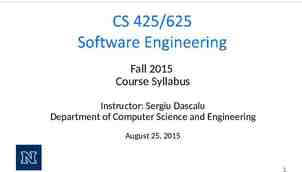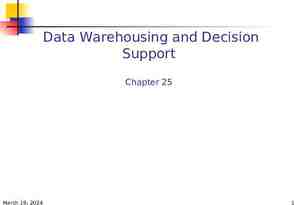Introduction to Financial Accounting
48 Slides392.89 KB
Introduction to Financial Accounting
Module 1 – Accounting theory, principles and concepts THE CONCEPT OF ACCOUNTANCY The following concepts are used in accounting: Assets; Owner’s equity; Capital; Liabilities Expenses; and Income. www.futuremanagers.com
Module 1 – Accounting theory, principles and concepts (continued) CAPITAL FOR A NEW BUSINESS Most transactions are accompanied by source documents. Source documents represent the starting point of the recording process, providing detailed information from which each transaction is systematically classified and filed and subsequently entered into the respective books of prime entry. www.futuremanagers.com
Module 1 – Accounting theory, principles and concepts (continued) THE PROFIT MOTIVE Most transactions are accompanied by source documents. Source documents represent the starting point of the recording process, providing detailed information from which each transaction is systematically classified and filed and subsequently entered into the respective books of prime entry. www.futuremanagers.com
Module 2 – Forms of ownership DIFFERENT FORMS OF OWNERSHIP The following concepts are used in accounting: Assets; Owner’s equity; Capital; Liabilities Expenses; and Income. www.futuremanagers.com
Module 2 – Forms of ownership (continued) FORMS OF OWNERSHIP Most transactions are accompanied by source documents. Source documents represent the starting point of the recording process, providing detailed information from which each transaction is systematically classified and filed and subsequently entered into the respective books of prime entry. www.futuremanagers.com
Module 3 – Documents and authorisation of transactions SOURCE DOCUMENTS The following concepts are used in accounting: Assets; Owner’s equity; Capital; Liabilities Expenses; and Income. www.futuremanagers.com
Module 3 – Documents and authorisation of transactions (continued) INTERNAL DOCUMENTS Most transactions are accompanied by source documents. Source documents represent the starting point of the recording process, providing detailed information from which each transaction is systematically classified and filed and subsequently entered into the respective books of prime entry. www.futuremanagers.com
Module 3 – Documents and authorisation of transactions (continued) EXTERNAL DOCUMENTS Most transactions are accompanied by source documents. Source documents represent the starting point of the recording process, providing detailed information from which each transaction is systematically classified and filed and subsequently entered into the respective books of prime entry. www.futuremanagers.com
Module 3 – Documents and authorisation of transactions (continued) FILING/ARCHIVING OF DOCUMENTS Most transactions are accompanied by source documents. Source documents represent the starting point of the recording process, providing detailed information from which each transaction is systematically classified and filed and subsequently entered into the respective books of prime entry. www.futuremanagers.com
Module 3 – Documents and authorisation of transactions (continued) REGISTERS OF UNUSED DOCUMENTS Most transactions are accompanied by source documents. Source documents represent the starting point of the recording process, providing detailed information from which each transaction is systematically classified and filed and subsequently entered into the respective books of prime entry. www.futuremanagers.com
Module 3 – Documents and authorisation of transactions (continued) SAFEKEEPING OF USED AND UNUSED INTERNAL SOURCE DOCUMENTS Most transactions are accompanied by source documents. Source documents represent the starting point of the recording process, providing detailed information from which each transaction is systematically classified and filed and subsequently entered into the respective books of prime entry. www.futuremanagers.com
Module 3 – Documents and authorisation of transactions (continued) AUTHORISATION OF TRANSACTIONS Most transactions are accompanied by source documents. Source documents represent the starting point of the recording process, providing detailed information from which each transaction is systematically classified and filed and subsequently entered into the respective books of prime entry. www.futuremanagers.com
Module 3 – Documents and authorisation of transactions (continued) SOURCE AND SUPPORTING DOCUMENTS Most transactions are accompanied by source documents. Source documents represent the starting point of the recording process, providing detailed information from which each transaction is systematically classified and filed and subsequently entered into the respective books of prime entry. www.futuremanagers.com
Module 4 – Starting a commercial enterprise ACCOUNTING SYSTEMS USED BY THE BUSINESS The following concepts are used in accounting: Assets; Owner’s equity; Capital; Liabilities Expenses; and Income. www.futuremanagers.com
Module 4 – Starting a commercial enterprise (continued) BANKING AND BANKING ACCOUNTS Most transactions are accompanied by source documents. Source documents represent the starting point of the recording process, providing detailed information from which each transaction is systematically classified and filed and subsequently entered into the respective books of prime entry. www.futuremanagers.com
Module 4 – Starting a commercial enterprise (continued) GUIDELINES FOR RECEIVING AND DEPOSTING MONEY Most transactions are accompanied by source documents. Source documents represent the starting point of the recording process, providing detailed information from which each transaction is systematically classified and filed and subsequently entered into the respective books of prime entry. www.futuremanagers.com
Module 4 – Starting a commercial enterprise (continued) GUIDELINES FOR PAYING MONEY Most transactions are accompanied by source documents. Source documents represent the starting point of the recording process, providing detailed information from which each transaction is systematically classified and filed and subsequently entered into the respective books of prime entry. www.futuremanagers.com
Module 4 – Starting a commercial enterprise (continued) INTERNET BANKING Most transactions are accompanied by source documents. Source documents represent the starting point of the recording process, providing detailed information from which each transaction is systematically classified and filed and subsequently entered into the respective books of prime entry. www.futuremanagers.com
Module 5 – Financial concepts and the Accounting equation FINANCIAL CONCEPTS The following concepts are used in accounting: Assets; Owner’s equity; Capital; Liabilities Expenses; and Income. www.futuremanagers.com
Module 5 – Financial concepts and the Accounting equation (continued) CYCLE OF TRADING ACTIVITIES Most transactions are accompanied by source documents. Source documents represent the starting point of the recording process, providing detailed information from which each transaction is systematically classified and filed and subsequently entered into the respective books of prime entry. www.futuremanagers.com
Module 5 – Financial concepts and the Accounting equation (continued) THE DOUBLE-ENTRY SYSTEM Most transactions are accompanied by source documents. Source documents represent the starting point of the recording process, providing detailed information from which each transaction is systematically classified and filed and subsequently entered into the respective books of prime entry. www.futuremanagers.com
Module 5 – Financial concepts and the Accounting equation (continued) THE ACCOUNTING EQUATION Most transactions are accompanied by source documents. Source documents represent the starting point of the recording process, providing detailed information from which each transaction is systematically classified and filed and subsequently entered into the respective books of prime entry. www.futuremanagers.com
Module 6 –Trading concerns; principles regarding double entries THE GENERAL LEDGER The following concepts are used in accounting: Assets; Owner’s equity; Capital; Liabilities Expenses; and Income. www.futuremanagers.com
Module 6 –Trading concerns; principles regarding double entries (continued) APPLY THE DOUBLE-ENTRY PRINCIPLE Most transactions are accompanied by source documents. Source documents represent the starting point of the recording process, providing detailed information from which each transaction is systematically classified and filed and subsequently entered into the respective books of prime entry. www.futuremanagers.com
Module 6 –Trading concerns; principles regarding double entries (continued) GROUPING OF LEDGER ACCOUNTS Most transactions are accompanied by source documents. Source documents represent the starting point of the recording process, providing detailed information from which each transaction is systematically classified and filed and subsequently entered into the respective books of prime entry. www.futuremanagers.com
Module 6 –Trading concerns; principles regarding double entries (continued) THE CONTINUOUS STOCK SYSTEM Most transactions are accompanied by source documents. Source documents represent the starting point of the recording process, providing detailed information from which each transaction is systematically classified and filed and subsequently entered into the respective books of prime entry. www.futuremanagers.com
Module 6 –Trading concerns; principles regarding double entries (continued) THE PERIODIC STOCK SYSTEM Most transactions are accompanied by source documents. Source documents represent the starting point of the recording process, providing detailed information from which each transaction is systematically classified and filed and subsequently entered into the respective books of prime entry. www.futuremanagers.com
Module 6 –Trading concerns; principles regarding double entries (continued) THE TRIAL BALANCE Most transactions are accompanied by source documents. Source documents represent the starting point of the recording process, providing detailed information from which each transaction is systematically classified and filed and subsequently entered into the respective books of prime entry. www.futuremanagers.com
Module 7 – Cash receipts journal and transfer (post) to the ledger CASH RECIEPTS JOURNAL The following concepts are used in accounting: Assets; Owner’s equity; Capital; Liabilities Expenses; and Income. www.futuremanagers.com
Module 7 – Cash receipts journal and transfer (post) to the ledger (continued) POSTING FROM THE CASH RECEIPTS JOURNAL TO THE GENERAL LEDGER Most transactions are accompanied by source documents. Source documents represent the starting point of the recording process, providing detailed information from which each transaction is systematically classified and filed and subsequently entered into the respective books of prime entry. www.futuremanagers.com
Module 8 – Cash payments and transfer (post) to the ledger CASH PAYMENTS JOURNAL The following concepts are used in accounting: Assets; Owner’s equity; Capital; Liabilities Expenses; and Income. www.futuremanagers.com
Module 8 – Cash payments and transfer (post) to the ledger (continued) POSTING FROM THE CASH PAYMENTS JOURNAL TO THE GENERAL LEDGER Most transactions are accompanied by source documents. Source documents represent the starting point of the recording process, providing detailed information from which each transaction is systematically classified and filed and subsequently entered into the respective books of prime entry. www.futuremanagers.com
Module 8 – Cash payments and transfer (post) to the ledger (continued) CASH RECIEPTS JOUNRAL AD THE CASH PAYMENTS JOURNAL Most transactions are accompanied by source documents. Source documents represent the starting point of the recording process, providing detailed information from which each transaction is systematically classified and filed and subsequently entered into the respective books of prime entry. www.futuremanagers.com
Module 9 – Analysis Cash book and transfer (post) to the ledger ANALYSIS CASH BOOK The following concepts are used in accounting: Assets; Owner’s equity; Capital; Liabilities Expenses; and Income. www.futuremanagers.com
Module 10 – Petty cash journal THE PETTY CASH JOURNAL The following concepts are used in accounting: Assets; Owner’s equity; Capital; Liabilities Expenses; and Income. www.futuremanagers.com
Module 10 – Petty cash journal (continued) THE PETTY CASH VOUCHER Most transactions are accompanied by source documents. Source documents represent the starting point of the recording process, providing detailed information from which each transaction is systematically classified and filed and subsequently entered into the respective books of prime entry. www.futuremanagers.com
Module 10 – Petty cash journal (continued) THE IMPREST SYSTEM Most transactions are accompanied by source documents. Source documents represent the starting point of the recording process, providing detailed information from which each transaction is systematically classified and filed and subsequently entered into the respective books of prime entry. www.futuremanagers.com
Module 11 – Wages and salaries journal TYPES OF WAGE SYSTEMS The following concepts are used in accounting: Assets; Owner’s equity; Capital; Liabilities Expenses; and Income. www.futuremanagers.com
Module 11 – Wages and salaries journal (continued) OVERTIME REMUNERATION Most transactions are accompanied by source documents. Source documents represent the starting point of the recording process, providing detailed information from which each transaction is systematically classified and filed and subsequently entered into the respective books of prime entry. www.futuremanagers.com
Module 11 – Wages and salaries journal (continued) DEDUCTIONS Most transactions are accompanied by source documents. Source documents represent the starting point of the recording process, providing detailed information from which each transaction is systematically classified and filed and subsequently entered into the respective books of prime entry. www.futuremanagers.com
Module 11 – Wages and salaries journal (continued) THE WAGE JOURNAL Most transactions are accompanied by source documents. Source documents represent the starting point of the recording process, providing detailed information from which each transaction is systematically classified and filed and subsequently entered into the respective books of prime entry. www.futuremanagers.com
Module 11 – Wages and salaries journal (continued) THE SALARY JOURNAL Most transactions are accompanied by source documents. Source documents represent the starting point of the recording process, providing detailed information from which each transaction is systematically classified and filed and subsequently entered into the respective books of prime entry. www.futuremanagers.com
Module 12 – Bank reconciliation BANK RECONCILIATION The following concepts are used in accounting: Assets; Owner’s equity; Capital; Liabilities Expenses; and Income. www.futuremanagers.com
Module 12 – Bank reconciliation (continued) PROCEDURAL RULES FOR RECONCILIATION Most transactions are accompanied by source documents. Source documents represent the starting point of the recording process, providing detailed information from which each transaction is systematically classified and filed and subsequently entered into the respective books of prime entry. www.futuremanagers.com
Module 12 – Bank reconciliation (continued) DRAWING UP A BANK RECONCILIATION STATEMENT Most transactions are accompanied by source documents. Source documents represent the starting point of the recording process, providing detailed information from which each transaction is systematically classified and filed and subsequently entered into the respective books of prime entry. www.futuremanagers.com
Module 13 – End-of-year procedure THE CONCEPT OF PROFIT The following concepts are used in accounting: Assets; Owner’s equity; Capital; Liabilities Expenses; and Income. www.futuremanagers.com
Module 13 – End-of-year procedure (continued) FINAL ACCOUNTS AND CLOSING PROCEDURE Most transactions are accompanied by source documents. Source documents represent the starting point of the recording process, providing detailed information from which each transaction is systematically classified and filed and subsequently entered into the respective books of prime entry. www.futuremanagers.com





















































